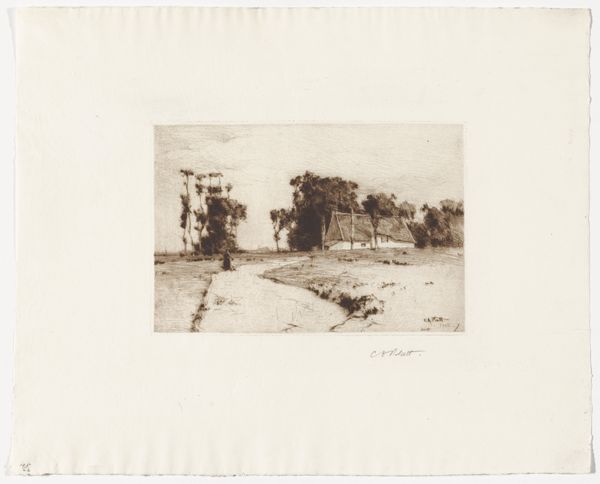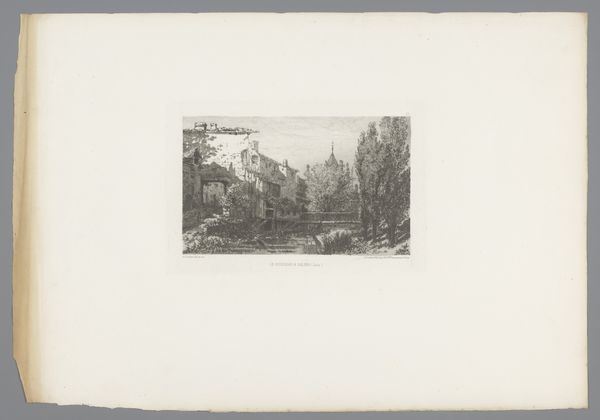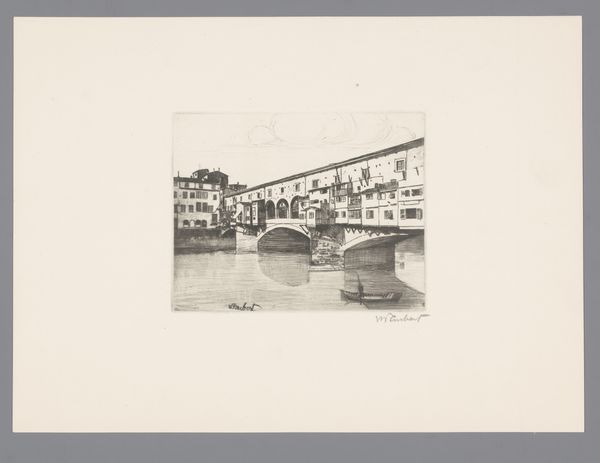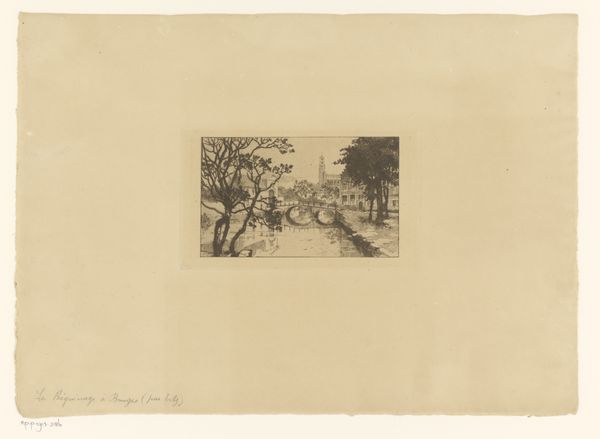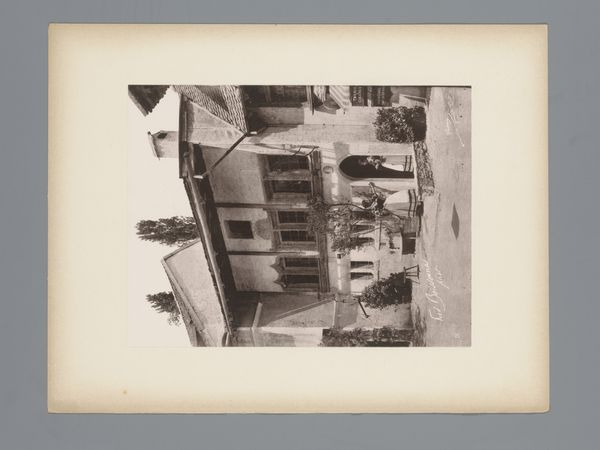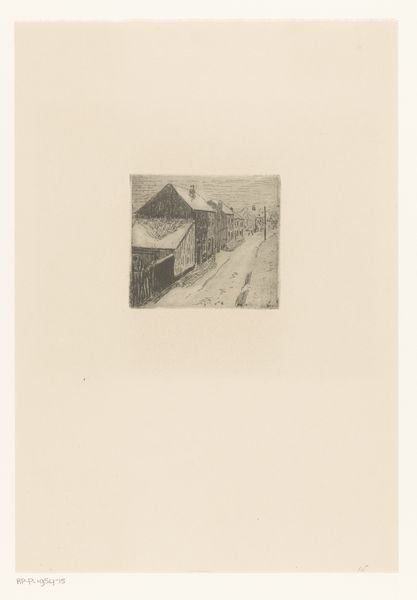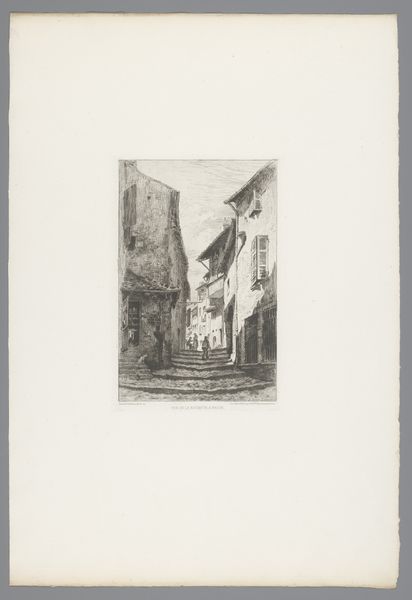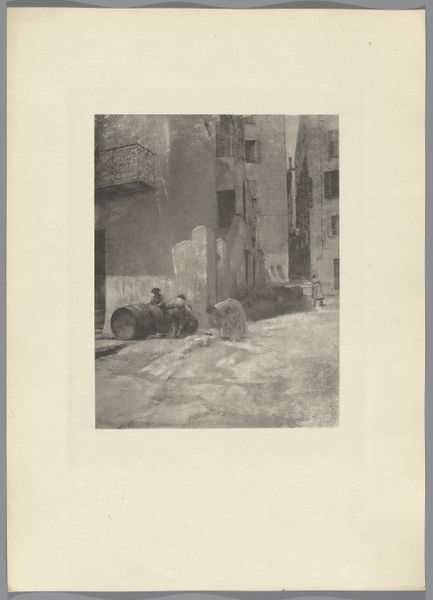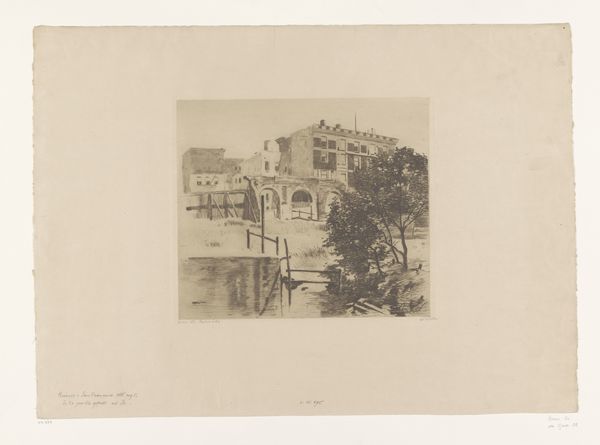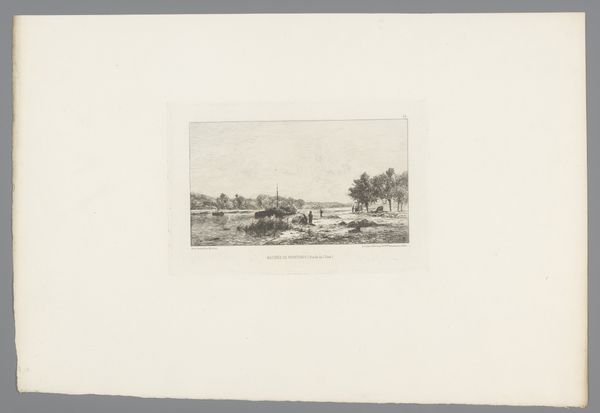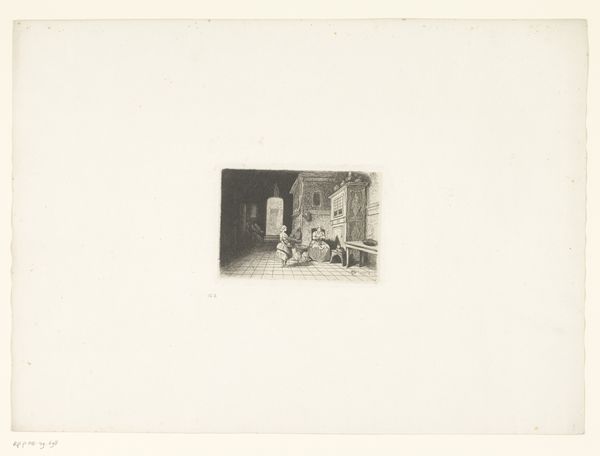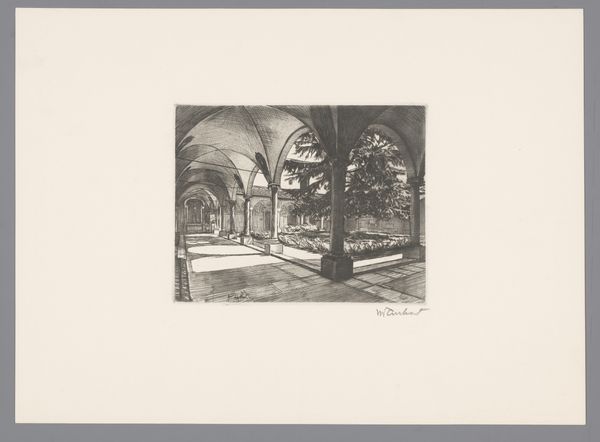
Gezicht op Florence met in de verte Palazzo Vecchio en de Dom 1886 - 1927
0:00
0:00
print, etching
# print
#
etching
#
landscape
#
cityscape
#
realism
Dimensions: height 129 mm, width 178 mm
Copyright: Rijks Museum: Open Domain
Editor: This is Guglielmo Taubert's "Gezicht op Florence met in de verte Palazzo Vecchio en de Dom," an etching made sometime between 1886 and 1927. It has a quiet, almost melancholic feel to it. What do you see in this piece? Curator: Beyond the beautiful cityscape, I see a reflection of Florence at a critical juncture. The late 19th century was a time of rapid urban development and industrialization across Europe. While Florence wasn't a major industrial center like London or Paris, it still felt these pressures. What isn't explicitly shown here – the social realities of inequality and labor – are implicitly present in the very act of idealizing the cityscape. Who has access to this "view," and who is excluded? Editor: That’s a compelling question. The angle does seem from a privileged vantage point, elevated above the city itself. Do you think this idealization is intentional? Curator: Absolutely. Realism, as a style, is often presented as objective, but it's always a constructed perspective. Consider how the artist chose to frame Florence, emphasizing its historical landmarks like the Palazzo Vecchio and the Duomo, rather than showing, for example, factories or working-class neighborhoods. What’s omitted is as significant as what's included. Whose history are we seeing reflected? How might a working-class Florentine interpret this scene differently? Editor: So the print is less about the actual city and more about the narrative someone wants to tell about it. That challenges my initial reaction. I was just seeing a nice view! Curator: Precisely. And that's where the power of engaging with art critically lies – questioning initial assumptions and understanding the layered social and political contexts in which these images are created and consumed. It forces us to look beyond the surface. Editor: This really changes how I look at landscapes. Thanks! Curator: My pleasure. Art invites these deeper investigations of power and representation.
Comments
No comments
Be the first to comment and join the conversation on the ultimate creative platform.
